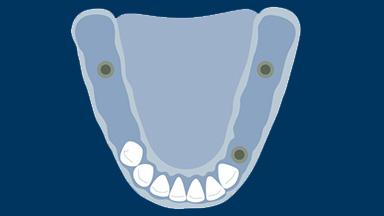
Design Principles for Combining Single Unsplinted Dental Implants and Partial Removable Dental Prostheses (RDPs) - Learning Modules - Home
Prosthodontic Planning and Procedures
Design Principles for Combining Single Unsplinted Dental Implants and Partial Removable Dental Prostheses (RDPs)
Conventional partial removable dental prostheses or partial RDPs continue to be an important treatment modality for many people. Although partial RDPs have a reputation as an economical prosthodontic solution, they are also associated with biological risks and lower patient satisfaction.
There are therefore specific challenges to overcome when they are prescribed. This is particularly the case with partial RDPs in Kennedy Classifications I, II, and IV of partial edentulism where one or more of the strategic natural tooth abutments are missing.
In combination with effective and hygienic conventional partial RDP design, strategic use of implants in these situations is gaining recognition as a simple, economical, but very effective means of enhancing the performance of partial RDPs and increasing patient satisfaction. This Learning Module will explore this use of implants in combination with conventional partial RDPs.

After completing this ITI Academy Module, you should be able to…
- describe indications for use of single unsplinted implants in combination with partial RDPs
- identify strategic placement positions for implants in Kennedy Class I, II, and IV partial RDP designs
- discuss the following supportive elements and superstructure options for single unsplinted implants: retentive stud attachments, functional single crowns
- Editor
- Charlotte Stilwell , Anthony S Dawson , Stephen T Chen
- Duration
- 35 min. + 10 min. for the Assessment
- CPD/CME
- 0.75 hours
- Purchase price
- 52 Academy Coins
- Related assessment
- Design Principles for Combining Single Unsplinted Dental Implants and Partial Removable Dental Prostheses (RDPs)
- Subtitles
- English Japanese
Share this page
Download the QR code with a link to this page and use it in your presentations or share it on social media.
Download QR code







